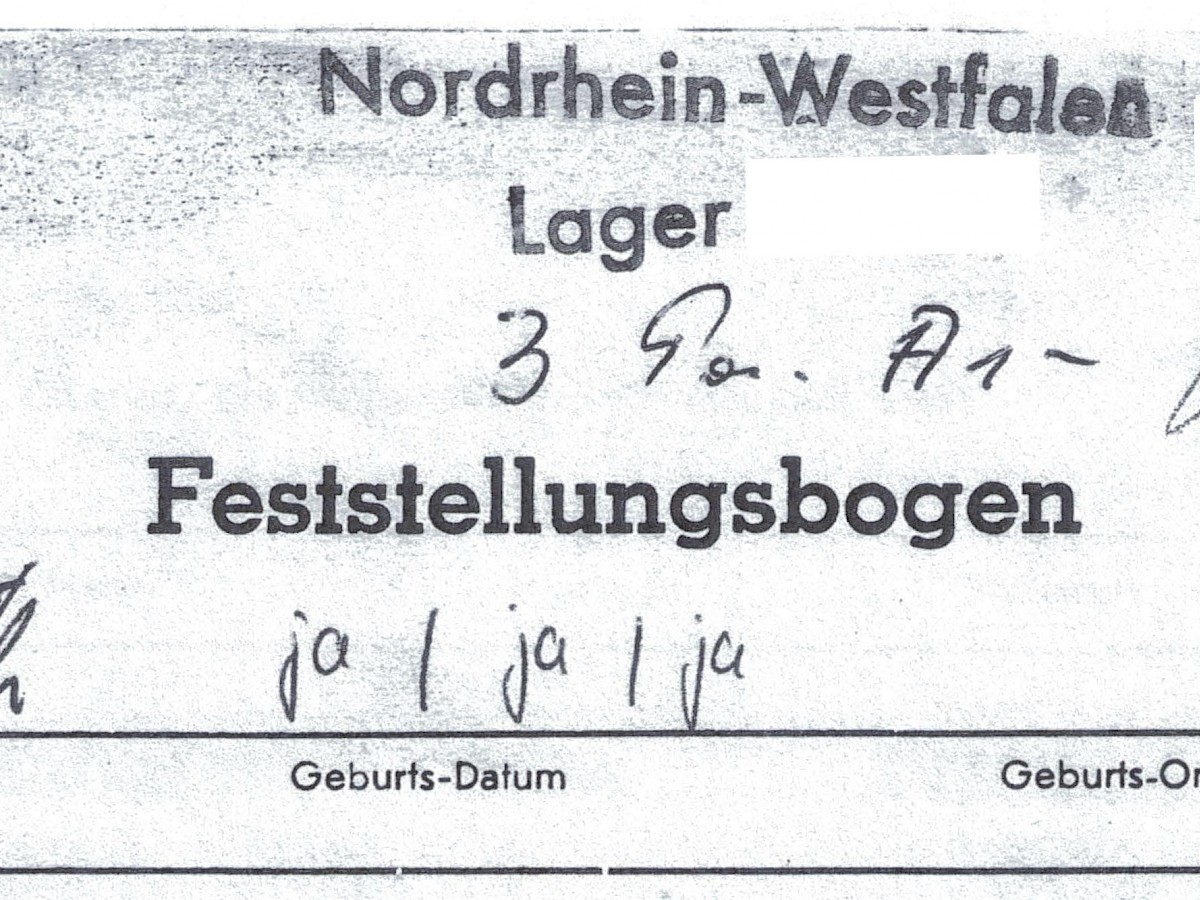
What is it worth taking with you?
What did people in the 1950s find important and valuable enough to take with them on their resettlement from Upper Silesia to Germany? I asked myself this question while I held the file of an acquaintance in my hands as I was standing in the archives of the Federal Administration Office in Friedland, which stores the files of returnees - POWs, military personnel and civilians who were behind the lines during WWII and returned to Germany after the end of the war. My acquaintance had migrated to Germany with her mother and sister towards the end of 1956. The “Feststellungsschein” or assessment file, which documents her registration in Friedland, lists 17 pieces of luggage for the three of them.
To my questions about her time in Friedland, she had always answered: "I don't know much about it anymore... the time in Friedland was not important for me... we were only there for a few days... we were just passing through to my father, who was already in Germany...". So I was surprised by her reaction when I told her about my visit to the archive and about her file. At that time I had only been able to look at the file and not yet copy it, but even the knowledge of its existence, its decade-long safekeeping in Friedland, and especially the detail about the number of items of luggage, managed what my questions had never succeeded to do: It brought back memories for her and she began to recount her story in greater detail: about the preparations for the journey, about the train ride and leaving home and friends... and.... about the contents of their luggage.
I had already speculated about this with my family: what might have been the most important memorabilia they wanted to take with them when leaving home, especially considering the opportunity of planning the trip, knowing the destination, and not having to leave in a hurry? What kind of luggage was it? What did they fill 17 pieces of luggage with? What did they leave behind?
The answer was surprising to me: Neither the family register nor other memorabilia were part of the luggage. The most impressive thing that my acquaintance remembered: "Because we were not allowed to take the family chronicle with us, my mother thought that the most important thing we needed was food, and so shortly before our planned departure we slaughtered our chickens and then arrived in Friedland with chicken preserved in butter...". When asked how three people could take care of 17 pieces of luggage during the trip, she replied: "I wasn't interested in that. To me, the entire situation was surreal, I only thought of my school friends and everything I knew and loved and had to leave behind in the place I knew as home.
I'm going to follow up on this story. But I was particularly fascinated by two things: Firstly, the ability of an object to trigger memories and emotions and to set conversations in motion, even if you don't hold it in your hands, but only know of it and are told about its existence. On the other hand, the fact that sometimes different things seem important in the context of migration and are taken along, in contrast to the things that I, as an outsider, have in my head and that I believe I would consider necessary for survival.
Serena Müller